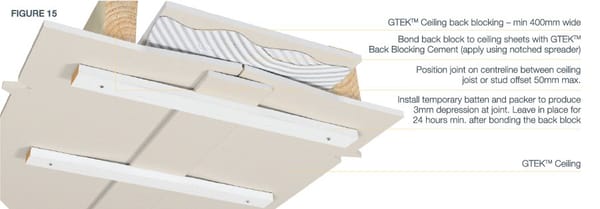Achieving a Level 4 finish is no easy feat and requires significant time, effort, and expertise.
Level 4 is the second-highest standard of plasterboard finish and provides an smooth, seamless surface ready to paint. To reach this level, you'll need the right tools, materials, and skills. Simply slapping on a coat of paint won't cut it here. Detailed surface preparation including filling, sanding, and priming are required to hide imperfections and create a surface so smooth you can't see any hints of joints or screws.
If you're determined to tackle a Level 4 finish yourself, be prepared to put in the work. But for many homeowners, hiring a professional plastering contractor is worth the investment to ensure an immaculate, flawless result and avoid frustration.
What Is Level 4 Plasterboard Finish?
Level 4 refers to the second-highest level of finish for plasterboard according to Australian Standard AS/NZS 2589. It requires careful installation and surface preparation to provide a smooth, uniform surface ready for painting. For residential construction, Level 4 finish is the standard and helps achieve a professional result.
To achieve a Level 4 finish, plasterboard sheets should be installed horizontally on walls and parallel to the main light source on ceilings. Use full sheets where possible, and minimise butt joints. Joints require a 3-coat system, with each coat drying fully, then sanding the top coat smooth. Feather the edges of joints, internal and external corners, fixings and cornices to the same standard.
An essential first step is sealing the plasterboard face and joints with a quality sealer or primer. This equalises the surface texture and absorption rate, providing an even base for paint. In some cases, the sealer is the most important part of the paint system. Apply two top coats of paint once the sealer is dry, allowing adequate drying time between coats.
Gloss banding or sheen staining, where joint areas have a different gloss level, often results from improper sealing or not allowing setting coats to completely dry before re-coating. To avoid this, let setting coats completely dry and ensure to seal plasterboard faces to keep fibres flat. An initial tinted sealer coat may be needed for surfaces prone to yellowing, bleeding or sheen staining before the sealer undercoat.
Steps to Achieve Level 4 Finish
To achieve a Level 4 plasterboard finish in your home, there are a few key steps you'll need to follow.
First, install the plasterboard horizontally and ensure all joints are finished properly. Apply at least three coats of jointing compound, letting each coat dry completely before adding the next. Then sand the joints smooth and feather the edges so they blend in with the wall surface.
Next, seal the entire wall with a quality sealer or primer. This helps create an even finish by reducing differences in texture and absorption between the plasterboard face and joints. Without primer, the wall won’t accept paint evenly, which results in an uneven, patchy appearance.
Once the sealer is dry, apply two topcoats of your chosen paint, waiting for each coat to dry in between. For the best results, use a premium paint and sand lightly between coats. The final coat should have a uniform, professional-looking finish.
Proper lighting is also important for inspecting your work. Harsh lighting can highlight any imperfections, while dim lighting can hide them. View the walls in the same type of lighting that will be used in the room.
By carefully installing the plasterboard, properly finishing the joints, sealing the entire wall and applying quality paint with multiple coats, you'll achieve a high-quality Level 4 plasterboard finish in your home. Take your time and don't cut corners - the end result will be worth the effort. With the right technique and materials, you can accomplish a flawless finish.
Painting Over Level 4 Finish
Now that your Level 4 plasterboard finish is complete, it’s time for the fun part—painting! To achieve an attractive finished look, there are a few key things to keep in mind.
First, make sure the undercoat is fully dry before starting. Applying paint too soon will result in an uneven, blotchy finish. Give the undercoat at least 2-3 days to cure completely.
Once dry, apply a minimum of two top coats of high-quality paint using a roller. For the most uniform finish, consider using a sprayer to apply the paint and then back-rolling it with a roller. This helps ensure even coverage and avoids drips or splatters.
Be meticulous when cutting in edges and painting trim. Carefully brush the paint onto edges, corners and trim before rolling the walls. Touch up any spots you missed for a flawless finish.
Inspect the walls closely after the first coat and touch up any imperfections before applying the second coat. Look for pinholes, cracks, or uneven areas and treat them so the topcoat looks perfect.
For the best results, consider using an eggshell or satin sheen paint. These provide an attractive low-lustre finish that hides imperfections well. Matte or flat paints can make flaws and repairs more visible.
Take your time and don’t rush the painting process. Applying multiple thin coats, allowing each to dry completely, will provide much better results than slapping on thick coats quickly. Your patience and attention to detail will pay off with an elegant Level 4 plasterboard finish you can be proud of.
Conclusion
It may seem like a lot of work, but the results will be well worth it. Smooth walls, crisp lines and a finish that looks professionally done. You've got the skills and the know-how, now all you need are the right tools and materials, a bit of patience and an eye for detail. Take your time, focus on getting each step right and you'll have a Level 4 finish to be proud of in no time.







